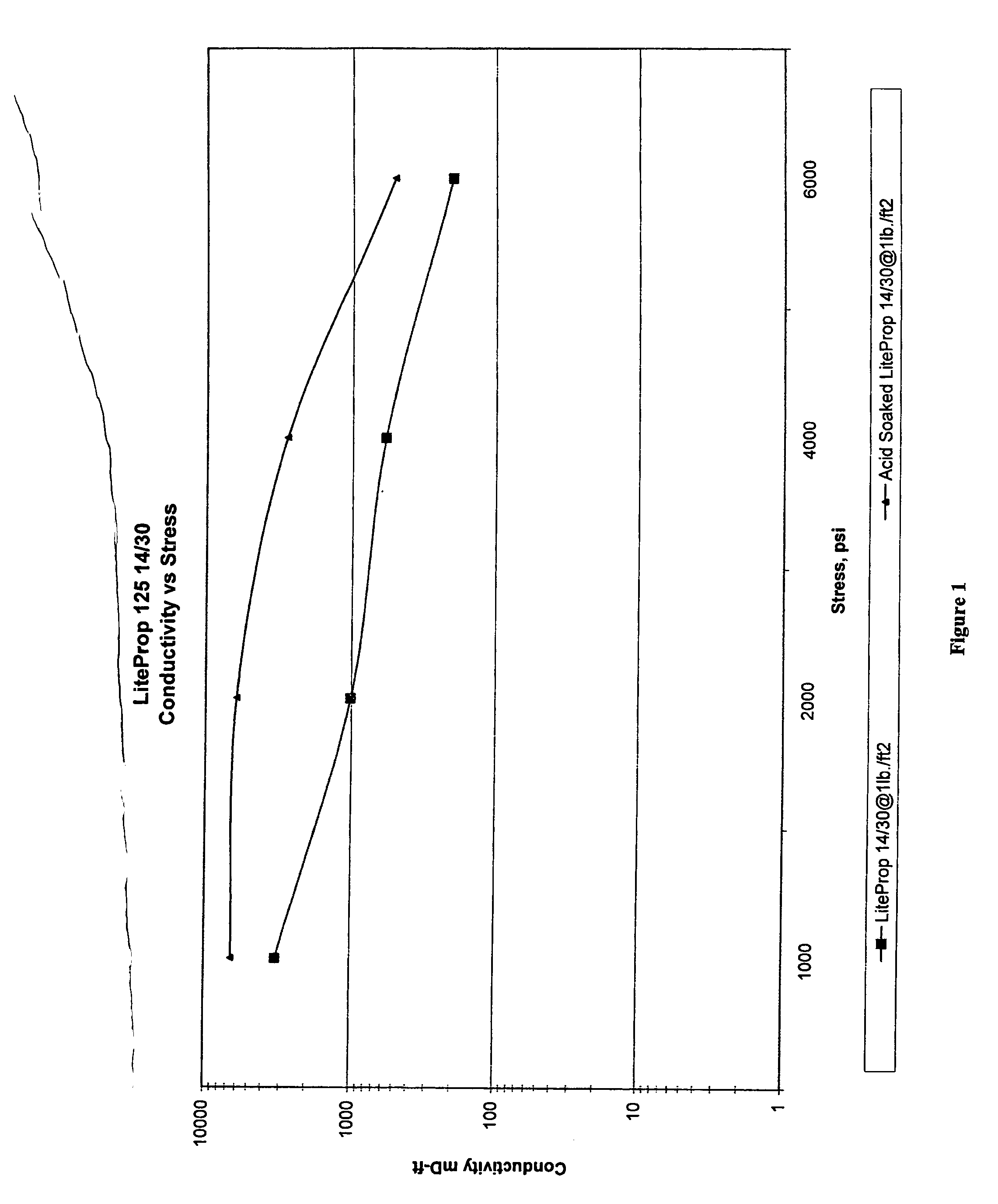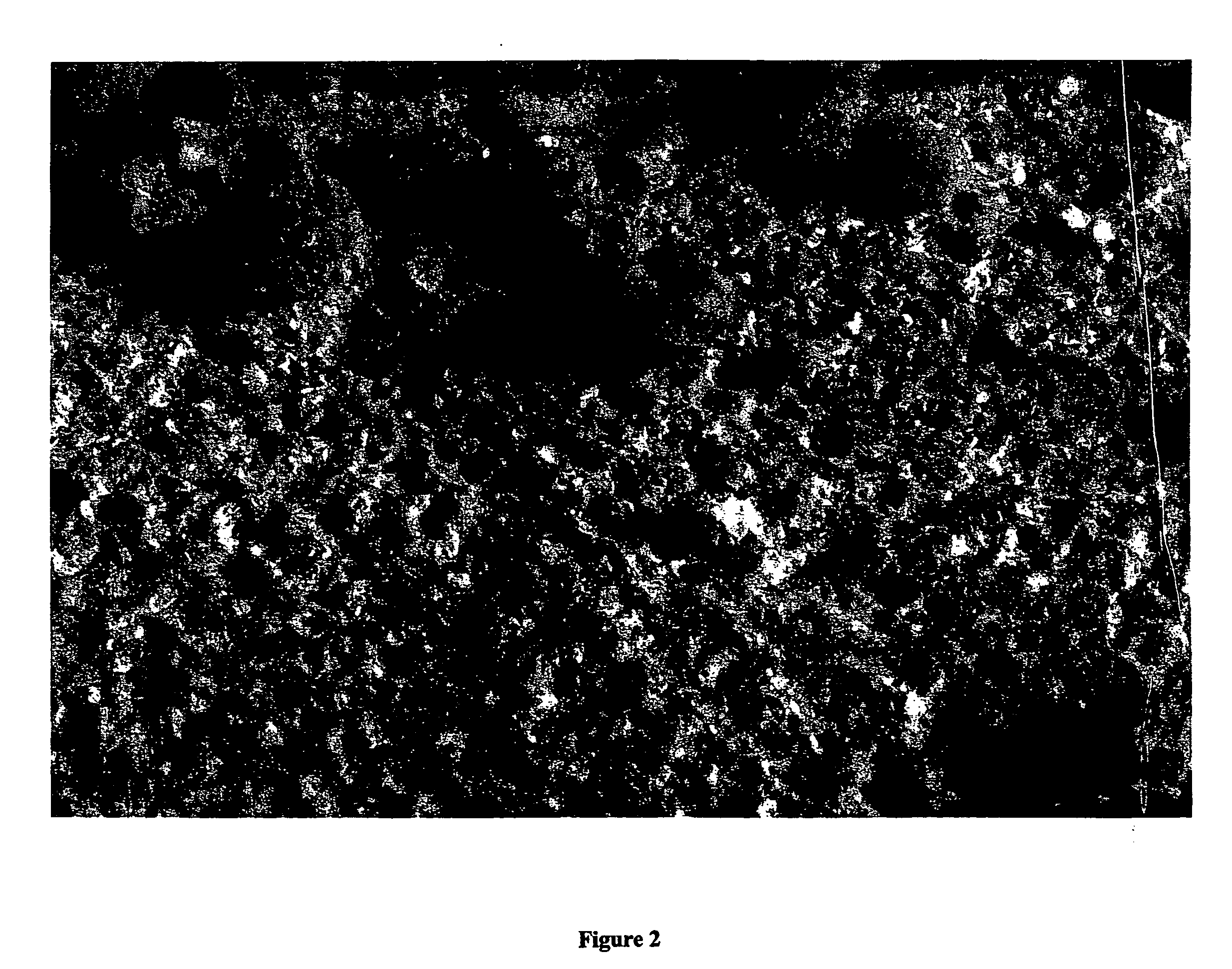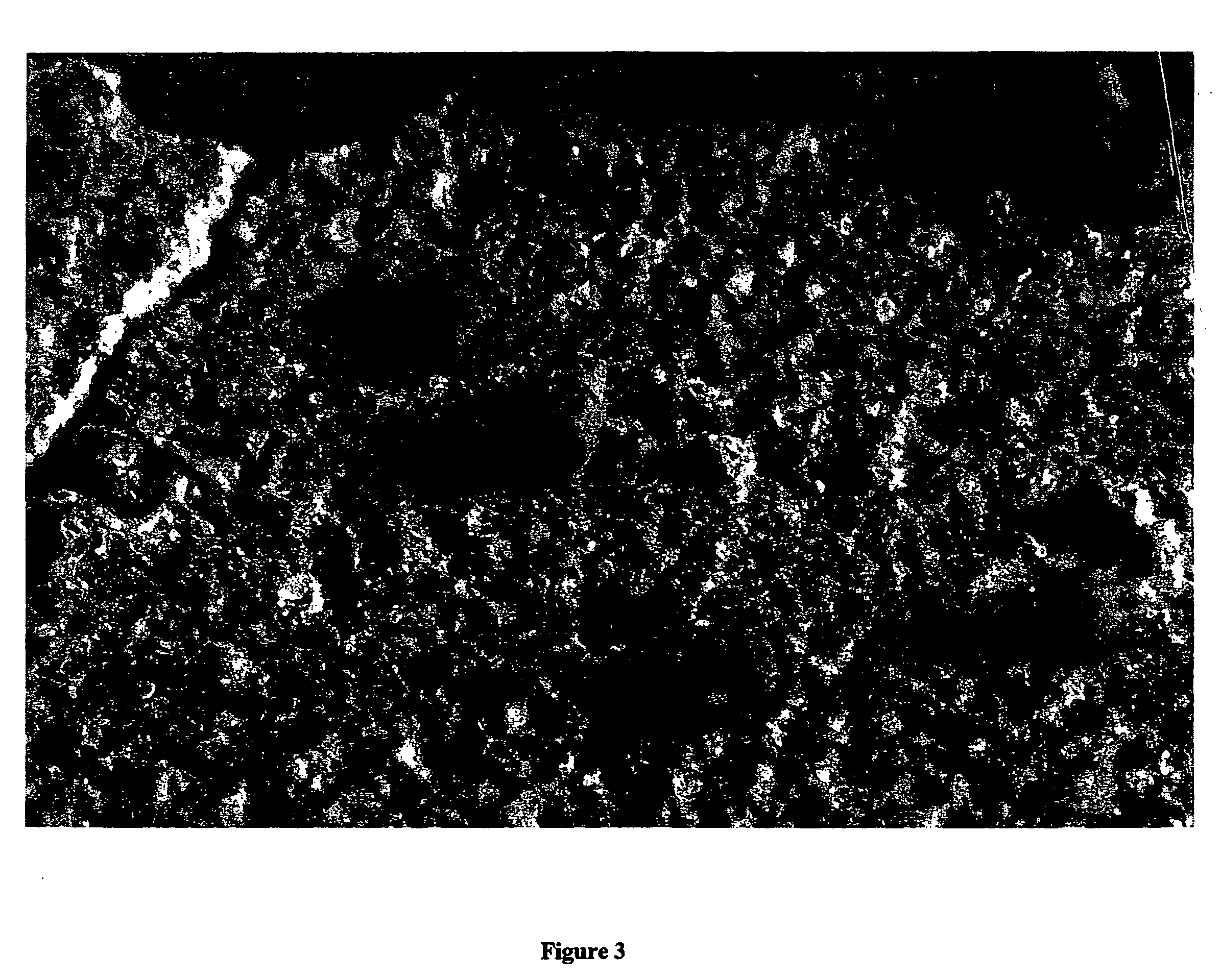Well treating composition containing relatively lightweight proppant and acid
a technology of proppant and acid, which is applied in the direction of fluid removal, chemistry apparatus and processes, and wells with acid fractures that suffer rapid production declines, and can solve the problems of acid fractured wells that often require repeated treatments, high acid density of conventional proppants, and high density of acid in treating fluids
- Summary
- Abstract
- Description
- Claims
- Application Information
AI Technical Summary
Benefits of technology
Problems solved by technology
Method used
Image
Examples
example 1
[0085] Approximately 300 grams of LiteProp™ 125 proppant having a size of about 14 / 30 mesh and a product of BJ Services Company, were placed into a 1000-ml container and sufficient 10% HCl was added to cover the proppant. The container was then placed into a defined area with a temperature of approximately 90° F. After 24 hours, the excess acid was removed and the acid-soaked proppant was effectively washed with deionized water. The washed samples were then allowed to dry at 120-140° F. Each sample was visually examined.
[0086] The acid-soaked proppant appeared to have changed in color from brown to reddish brown to red. No other effect on the proppant was visually determined.
[0087] Conductivity tests were then performed according to API RP 61 (1st Revision, Oct. 1, 1989) using an API conductivity cell with Ohio sandstone wafer side inserts to simulate the producing formation. The test proppant was placed between the sealed sandstone wafers. The conductivity cell was then placed on...
example 2
[0093] Conductivity tests were conducted, as set forth in Example 1, using LiteProp™ 125 of 14 / 30 mesh wherein the pack was loaded at 0.06 lb / ft2. Sta-Live acid, a delayed acid product of BJ Services Company, was pumped through the pack at 20 mls / min.
[0094] As set forth in FIGS. 2 and 3, the relatively lightweight proppant as illustrated by the resin of the resin-coated proppant, is not damaged by the high strength of the acid during acid fracturing. This is further demonstrated by the etching of the acid with solubilized rock around the proppant particulates, which is indicative of greater open areas for fluid flow and thus higher conductivity. Without soaking the proppant in acid, the rock etches evenly.
PUM
 Login to View More
Login to View More Abstract
Description
Claims
Application Information
 Login to View More
Login to View More - R&D
- Intellectual Property
- Life Sciences
- Materials
- Tech Scout
- Unparalleled Data Quality
- Higher Quality Content
- 60% Fewer Hallucinations
Browse by: Latest US Patents, China's latest patents, Technical Efficacy Thesaurus, Application Domain, Technology Topic, Popular Technical Reports.
© 2025 PatSnap. All rights reserved.Legal|Privacy policy|Modern Slavery Act Transparency Statement|Sitemap|About US| Contact US: help@patsnap.com



